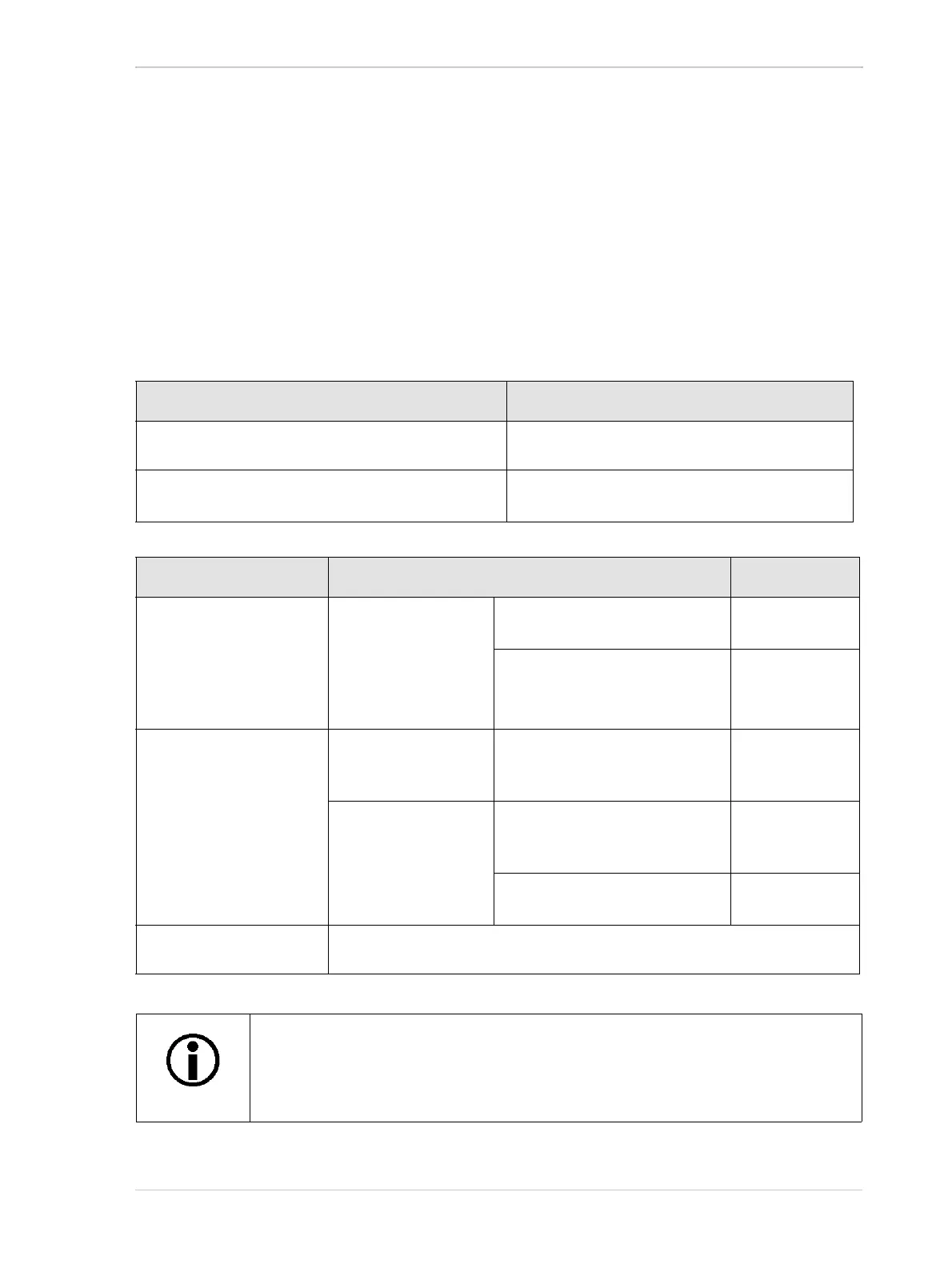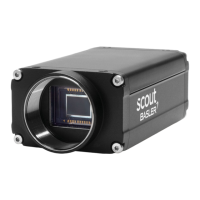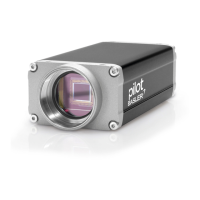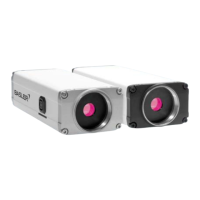AW00089317000 Standard Features
Basler ace GigE 217
Setting the AOI
By default, the AOI is set to use the full resolution of the camera’s sensor. You can change the size
and the position of the AOI by changing the value of the camera’s Offset X, Offset Y, Width, and
Height parameters.
Offset X: determines the starting column for the area of interest.
Offset Y: determines the starting row for the area of interest.
Width: determines the width of the area of interest.
Height: determines the height of the area of interest.
When you are setting the camera’s area of interest (AOI), you must follow these guidelines:
Valid for All Camera Models
Offset X + AOI width < Width of camera sensor Example:
acA640-120gm: Sum of Offset X + Width < 659.
Offset Y + AOI height < Height of camera sensor Example:
acA640-120gm: Sum of Offset Y+ Height < 494.
Valid for AOI Parameters Example
All camera models
Offset X
Offset Y
Width
Height
Mono cameras:
Can be set in increments of 1 1, 2, 3, 4, 5, etc.
Color cameras:
Can be set in increments of 2
Must be set to an even number
0, 2, 4, 6, 8, etc.
acA750
Offset X
Offset Y
Mono and color cameras:
Can be set in increments of 2
Must be set to an even number
0, 2, 4, 6, 8, etc.
Width
Height
Mono cameras:
Can be set in increments of 4
Must be set to an even number
4, 8, 12, 16, etc.
Color cameras:
Can be set in increments of 4 4, 8, 12, 16, etc.
acA1920-25,
acA2500-14
Minimum AOI size for width and height: 64
Normally, the X Offset, Y Offset, Width, and Height parameter settings refer to the
physical columns and rows of pixels in the sensor. But if binning or decimation is
enabled, these parameters are set in terms of "virtual" columns and rows. For
more information, see Section 10.9.3 on page 261.

